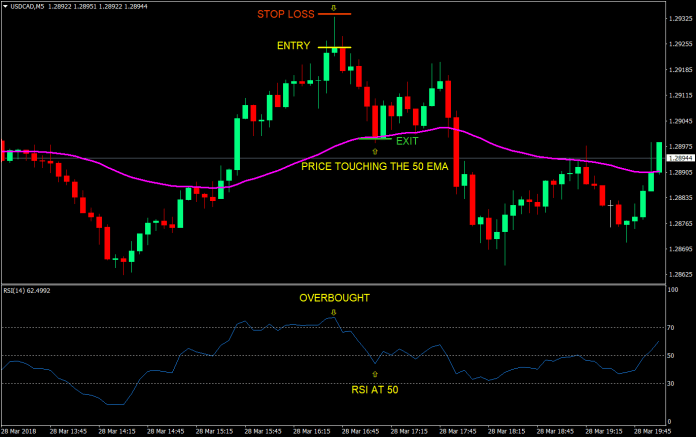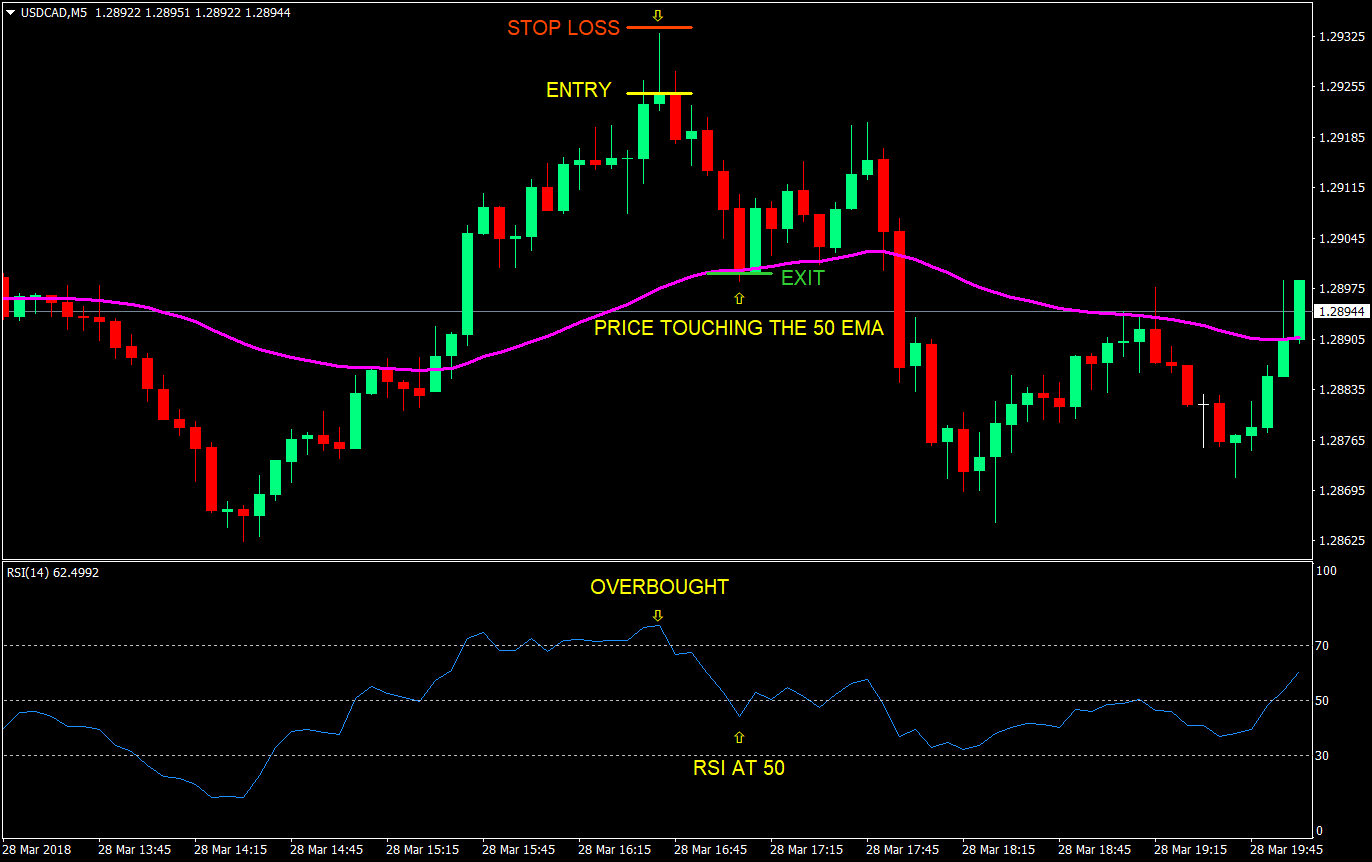Mean Reversion 101 Scalping
In trading, I would classify strategies into two main categories: momentum trading and mean reversion. Most of the time I prefer trading momentum strategies. This is because I prefer to trade with the trend rather than against it. However, even when all the momentum indicators in the world point to a good momentum setup, there are times that I prefer to avoid trading these momentum setups because the market is just overextended, it is prime for a reversal. Most of the time, I am right to just stay on the sidelines instead of risking my money because more often than not the market does reverse for a mean reversion.
This trading strategy is aimed at capitalizing those trades that I avoid, but instead of trading with the trend, we do the opposite. This is a classic mean reversion strategy.
The thesis behind mean reversion strategies is that price, although it could trend or make big one-sided moves, it couldn’t go too far from its average and would sooner or later come back to the average price. The psychology behind this is that companies, banks, investors, traders, and all the other market players would always want a discount. If price is deemed too expensive, they would rather stay on the sidelines and wait for price to become a little cheaper before they’d consider being involved in the market.
So, let’s begin with the strategy itself.
The Setup: Trading Mean Reversions
One of the most common moving average that traders use to identify trend is the 50 Exponential Moving Average (EMA). The way most traders use it is very simple. If price is above the 50 EMA, the market is said to be bullish. If price is below it, the market is said to be bearish. However, there are times when price just strays off far from it causing the market to be either overbought or oversold. This makes the market prime for a mean reversion reversal. One of the things we will be looking for in our strategy is price being too overextended far from the 50 EMA. Then we will trade opposite to the trend as price would try to come back to the 50 EMA.
Although this seems like a sound strategy, catching reversals for mean reversions is quite difficult. To aid us in catching these reversals, we will be looking for pinbar candlesticks. Pinbar candlesticks are candlestick patterns with a small body on one end and a large wick on the other end. Many see this as reversal pattern, but I see this as an indication of price rejection. Basically, what the long wicks on one end is saying is that traders are rejecting that price area and think that price is no longer fair. They would rather buy or sell on one side of the candle, which forms the body. This pattern is a popular pattern that many traders look for to indicate reversals, so we would want to be trading with these traders looking for pinbars.
However, pinbars don’t always work. Yes, you would see reversals that started with pinbars, but not all pinbars would automatically mean reversals. We need something else to help filter out our trades so that we will be left with higher quality trades.
Remember, what we are looking for are overbought and oversold conditions right? To help us identify these overbought and oversold conditions, we will be using the Relative Strength Indicator (RSI). We will not trade every pinbar we see. Instead, we will be trading only pinbars that coincide with the RSI being oversold or overbought, then trade accordingly.
Since this is a scalping strategy, we will be using the 5-minute chart. This is a chart that many traders look at to scalp or day trade. Having conditions that many traders look at such as overbought and oversold conditions, or the presence of pinbars, in this timeframe could mean we will be trading with the bulk of the market.
Buy Entry:
- Price should be overextended below the 50-EMA.
- The RSI should be below 30 indicating an oversold condition.
- The candlestick should form a bullish pinbar pattern.
- Enter at the close of the candle.
Stop Loss: Set the stop loss a few pips below the entry candle.
Exit:
- Close the trade if price touches the 50 EMA.
Close the trade if the RSI touches the 50 line.
Sell Entry:
- Price should be overextended above the 50-EMA.
- The RSI should be above 70 indicating an overbought condition.
- The candlestick should form a bearish pinbar pattern.
- Enter at the close of the candle.
Stop Loss: Set the stop loss a few pips above the entry candle.
Exit:
- Close the trade if price touches the 50 EMA.
- Close the trade if the RSI touches the 50 line.
Conclusion
This strategy is an example of a good definition of mean reversion. Price retracing to 50 EMA mean price reverted to its mean or average for the past 50 candles. The RSI going back to the 50 line means price, coming from an overbought or oversold condition, is coming back to its average price.
These are conditions that would make me stay out of a momentum trade. Combining all these conditions together, overextended price away from the 50 EMA, overbought or oversold conditions on the RSI, plus a hint of a reversal using pinbars, increases the chances of a successful mean reversion trade. You would even see successful mean reversion trades with just having maybe a couple of these rules checked, a pinbar and an overextended price maybe. But it is always better to have higher probability trades.
One of its weaknesses though is that mean reversion strategies usually have a lower reward-risk ratio. This is because the 50 EMA acts as a dynamic support or resistance, something like an obstacle. The reason why we exit if price touches it is that often times, price could bounce off the 50 EMA. The relatively lower reward-risk ratio is further amplified on long pinbar candles.
Another weakness is also the fact that many traders use the 50 EMA as an indication of the direction of their trade. This means we could be trading against a big portion of the market. You would even see some scenarios wherein even with all the rules checked, there would still be times when the trade doesn’t work, the stop loss would get hit, only to find that price did go our direction a few candles more. What you could do though is to tweak the stop loss rule based on your preference, or you could opt to trade the next candles that is consistent with the rules.
Recommended MT4 Broker
- Free $50 To Start Trading Instantly! (Withdrawable Profit)
- Deposit Bonus up to $5,000
- Unlimited Loyalty Program
- Award Winning Forex Broker
- Additional Exclusive Bonuses Throughout The Year
>> Claim Your $50 Bonus Here <<
Click here below to download:





